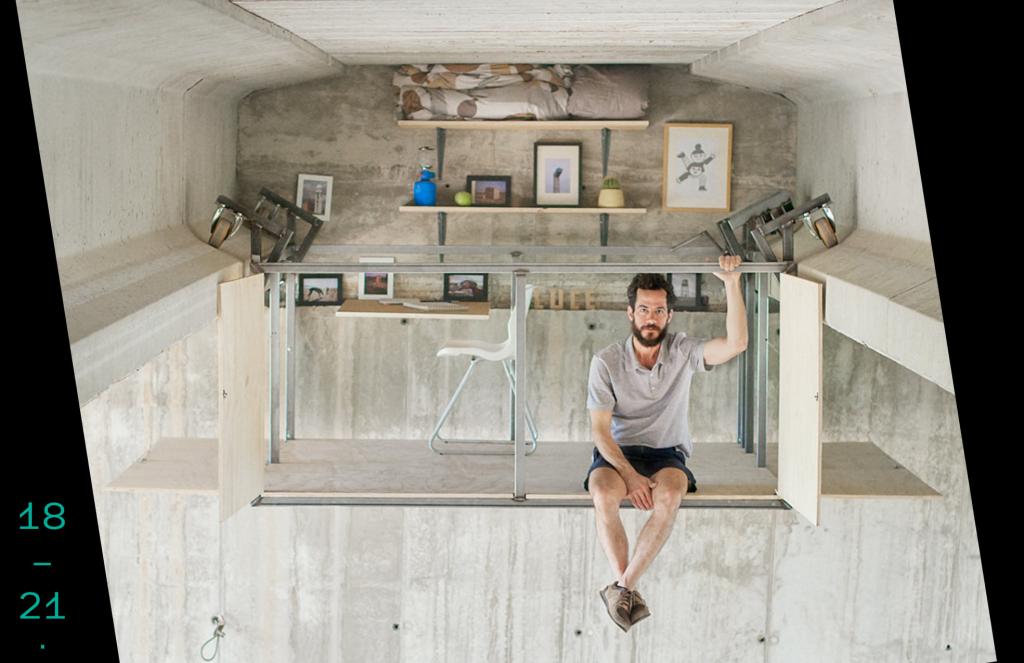Thessaloniki gets ready for its metro launch in November
The underground rapid transit lines have been under construction for almost two decades due to various project delays
 TheMayor.EU logo
TheMayor.EU logo 
Spanish artist Fernando Abellanas has created one of the 10 urban parasites, Source: UIT on Facebook
Parasitic architecture is the focus of this year’s artistic event
Today, Linnafestival UIT kicked off in Tartu, Estonia’s second largest city. From 18 to 21 August, the site-specific city and art festival will allow the urban space of its host town to be seen from a fresh and exciting perspective.
Cooperating with Estonian and foreign interdisciplinary artists, UIT Festival (derived from “uitama”, the Estonian word for ‘wander’, ‘rove’), explores the ways people interact with and feel about the surrounding urban space. Ultimately, the festival aims to encourage locals to use and enjoy public spaces proactively; finding new ways that could make their hometown cosier and more varied.
The festival programme comprises events that have been either composed for or derived from the urban space of Tartu: performances, concerts, urban tours and games, as well as activities for children.
The focus of this year's festival is parasitic architecture. The term signifies the multitude of randomly placed elements that cunningly clasp like “urban ticks” onto the deliberately planned buildings without any intention of letting go.
According to UIT Festival organizers, the creators of these urban parasites are often the city dwellers themselves who, driven by some kind of grassroots activism, are endowing their environment with new and necessary functions. Adding these creations makes the city less anonymous, more personal and comprehensible to its inhabitants. And this is begging the question: do we have parasitism here or rather a symbiosis?
As a part of UIT Festival’s parasitic architecture installation programme, 10 urban parasites have been created by local and foreign artists and placed all over Tartu, waiting to be discovered! The urban parasites have found their master organisms in narrow spaces between buildings, in abandoned factories, overgrown ponds and disused cinemas. The temporary revival of those sites allows Tartu to expand in abstract dimensions and invites the audience to a daydreaming session.
Another festival highlight, which may raise a few eyebrows given the pandemic unease of coming in close contact with strangers, are the Walking:Holding performative city walks. These are subtle, experiential performances that invite the participant to walk hand in hand with a series of different local strangers around the city in order to discover it from a new angle. The performance relies on unfamiliar perspectives, unexpected encounters and unimagined feelings.
First created in 2011 by Glasgow-based artist Rosana Cade, Walking:Holding has since toured in more than 40 cities across the UK and the world, picking local participants as performers in each location.
For more information on UIT’s programme, schedule and map of activities, visit the festival's webpage.

The underground rapid transit lines have been under construction for almost two decades due to various project delays

Now you can get your wine in Talence by paying directly in Bitcoin

That’s because the state has to spend money on updating the railway infrastructure rather than subsidizing the cost of the popular pass

Rethinking renewable energy sources for the urban landscape

The examples, compiled by Beyond Fossil Fuels, can inform and inspire communities and entrepreneurs that still feel trepidation at the prospect of energy transition

Now you can get your wine in Talence by paying directly in Bitcoin

The 10th European Conference on Sustainable Cities and Towns (ESCT) sets the stage for stronger cooperation between the EU, national and local level to fast track Europe's transition to climate neutrality.

At least, that’s the promise made by the mayor of Paris, Anne Hidalgo

The underground rapid transit lines have been under construction for almost two decades due to various project delays

At least, that’s the promise made by the mayor of Paris, Anne Hidalgo

Hostal de Pinós is located in the geographical centre of the autonomous region

Despite its church-y name, the district has long been known as the hangout spot for the artsy crowds

Urban dwellers across the EU are having a say in making their surroundings friendlier to people and the environment.

Forests in the EU can help green the European construction industry and bolster a continent-wide push for architectural improvements.

Apply by 10 November and do your part for the transformation of European public spaces

An interview with the Mayor of a Polish city that seeks to reinvent itself

An interview with the newly elected ICLEI President and Mayor of Malmö

A conversation with the Mayor of Lisbon about the spirit and dimensions of innovation present in the Portuguese capital














